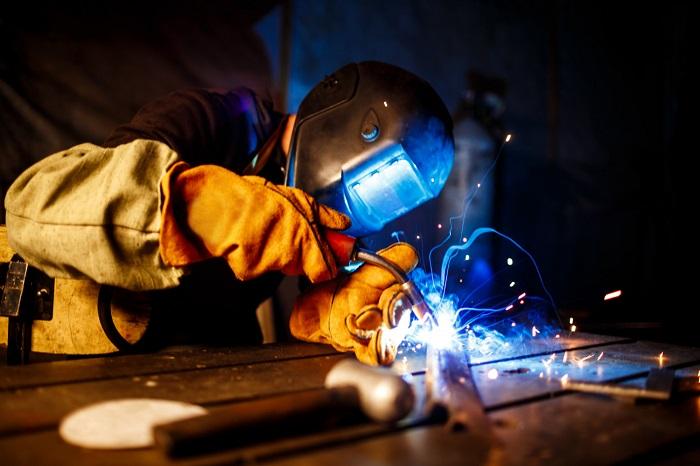Welding produces harmful fumes and gases that can be dangerous to welders’ health if not properly extracted and filtered. That’s why having the right welding fume extraction system is so important for any welding operation, whether in a large fabrication shop or a small home workshop. In this article, we’ll look at why fume extraction matters, the different types of systems available, and tips for selecting the right solution for your needs.
Why Fume Extraction Matters
The intense heat of welding causes the base metal, coatings, and filler materials to release plumes of potentially toxic fumes. Depending on the metals and processes involved, these fumes can contain mixtures of fine particulate matter, heavy metals like chromium and nickel, and gases like ozone, carbon monoxide, and nitrogen oxides.
Short-term exposure to welding fumes can result in dizziness, nausea, and metal fume fever. Long-term exposure is associated with serious respiratory diseases like bronchitis, asthma, and even cancer. Proper use of a fume extractor prevents operators from breathing in these harmful contaminants.
OSHA and other occupational health and safety organizations have established exposure limits for the most common welding fume constituents. A good fume extraction system will capture and filter the fumes to well below these permissible exposure limits. This protects welders’ lungs and provides a safer, healthier work environment.
Types of Welding Fume Extractors
There are three main types of extraction systems used for welding fumes:
-
Local exhaust systems: A movable hood, arm, or flexible extraction hose is positioned close to the welding work area to capture fumes at the source before they can disperse. This is the most efficient method, removing up to 95% of particles.
-
Ambient air cleaners: These systems filter and recirculate the air in the whole workshop. They are less effective since fumes have already traveled away from the welding point, but help reduce general background fume levels.
-
Portable units: Smaller mobile filter units with built-in fans sit on the floor near the welding workstation. They offer moderate extraction capabilities for small home or job site workshops.
The gold standard is a centralized local exhaust system, but portable and ambient options can also play an important role depending on the shop size and number of welders.
Key Considerations When Selecting Fume Extraction Equipment
Choosing suitable fume extraction requires considering factors like:
-
Filtration system: Filters must have sufficient capacity and filtration levels for the types and volumes of welding fumes produced. HEPA filters are recommended to effectively capture fine particles.
-
Adequate airflow and suction: Look for powerful fans or vacuum systems that can pull a high cubic feet per minute (CFM) rate through the filter. Flexible extraction arms need even more suction power.
-
Portability: If the extractor will be moved around a shop, sturdy wheels and convenient operation are key features. For field work, a compact and lightweight unit is best.
-
Noise level: Quieter operation promotes better communication and reduced fatigue in the workshop. Sound insulation helps dampen fan noise.
-
Cost: Consider long-term filter replacement costs, not just the upfront equipment price. Units with automatic filter cleaning systems can help reduce this maintenance burden.
-
Safety features: Look for units with full enclosures to contain fumes, fire-retardant filters, and thermal safety cut-outs. Adding an exhaust hose instead of recirculating filtered air is ideal.
Proper Use Guidelines
To maximize the effectiveness of any welding fume extraction system:
-
Position the extractor as close to the arc as possible, and directly in the path of fume flow.
-
Adjust flexible arms frequently to keep the hood nozzle near the arc as the welding progresses.
-
Use enough CFM and adequate duct size to achieve an air speed of around 500 feet per minute in the arm/duct.
-
Change filters as needed based on use to maintain extraction efficiency.
-
Make sure the system provides adequate airflow for the number of welders using it.
-
Use compressed air cautiously when cleaning filters to avoid spreading settled dust.
With a properly selected and used fume extraction system, welders can breathe easier knowing the air they’re working in is safe. Consult an experienced supplier to ensure the extraction solution matches the welding needs and processes involved. Proper fume control is a crucial investment in long-term respiratory health for any welding operation.
Innovative Fume Extraction System by Translas
When choosing a welding fume extractor for your workspace, go with a trusted brand like Translas to ensure the highest quality. Translas is an industry leader in welding torches and equipment manufacturing. They offer an innovative welding fume extractor designed to capture over 90% of harmful particles right at the welding spot, before fumes have a chance to reach your breathing zone. Engineered for portability with a flexible arm and quiet operation, the Translators model provides superior suction power while allowing welders to move freely. Translas fume extractors also come equipped with HEPA and carbon filtration to remove particles, gases, and odors. Investing in top-of-the-line extraction technology from Translas will provide welders with the greatest level of protection according to safety standards. Be sure to consider them when shopping for the best welding fume extractor to protect yourself on the job.
Conclusion
Proper welding fume extraction is not just a nice extra – it’s a vital component of a safe, healthy welding workspace. Breathing in toxic particulate requires using local exhaust systems, ambient air cleaners, or portable filtration units to capture these dangerous contaminants at the source before they can be inhaled. With careful selection of adequate equipment matched to your specific welding needs, training for proper use and maintenance, and strict adherence to safe exposure limits, welders can pursue their trade securely knowing their lungs are protected from hazardous fumes. Investing in clean air pays off with a lifetime of improved respiratory health.



